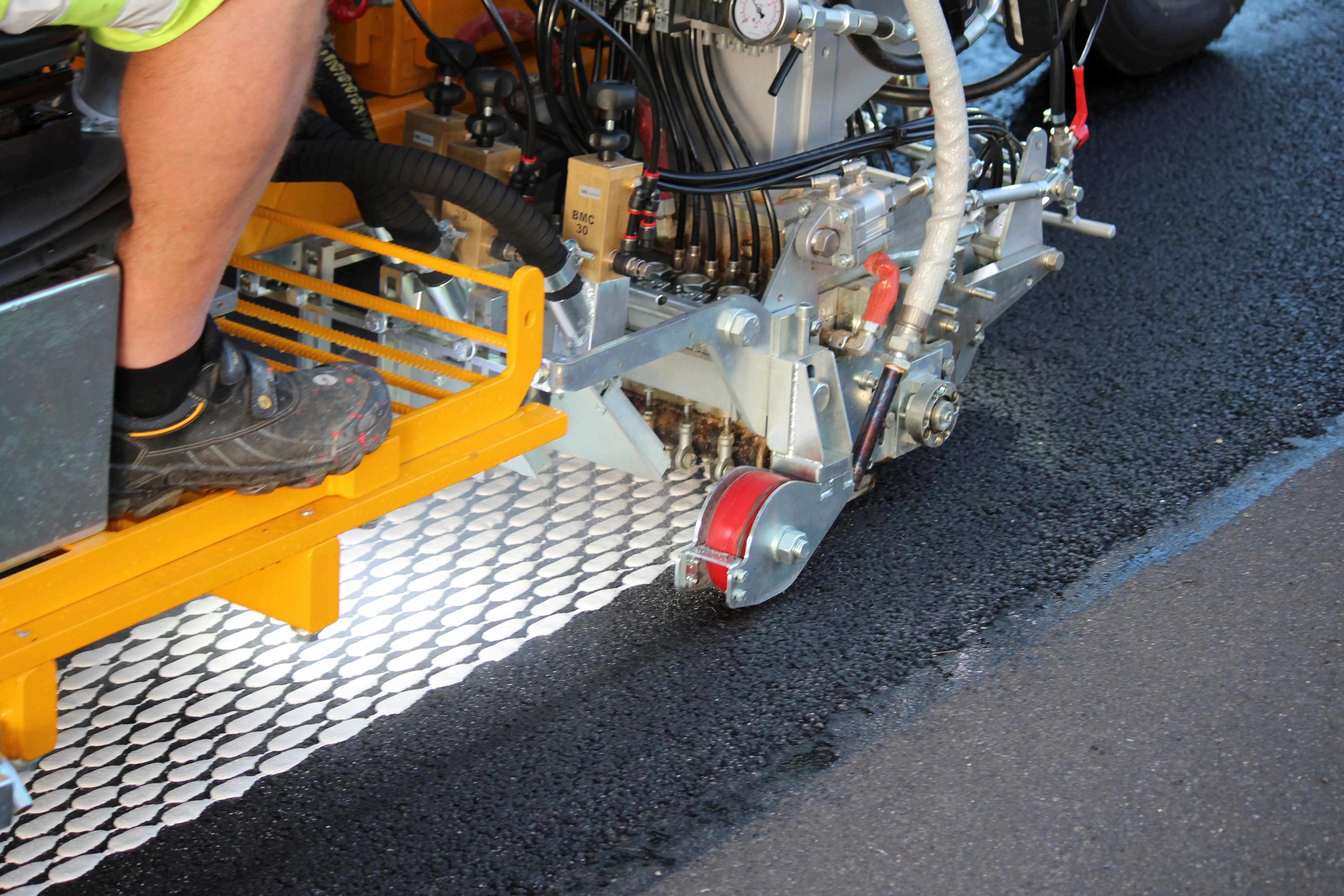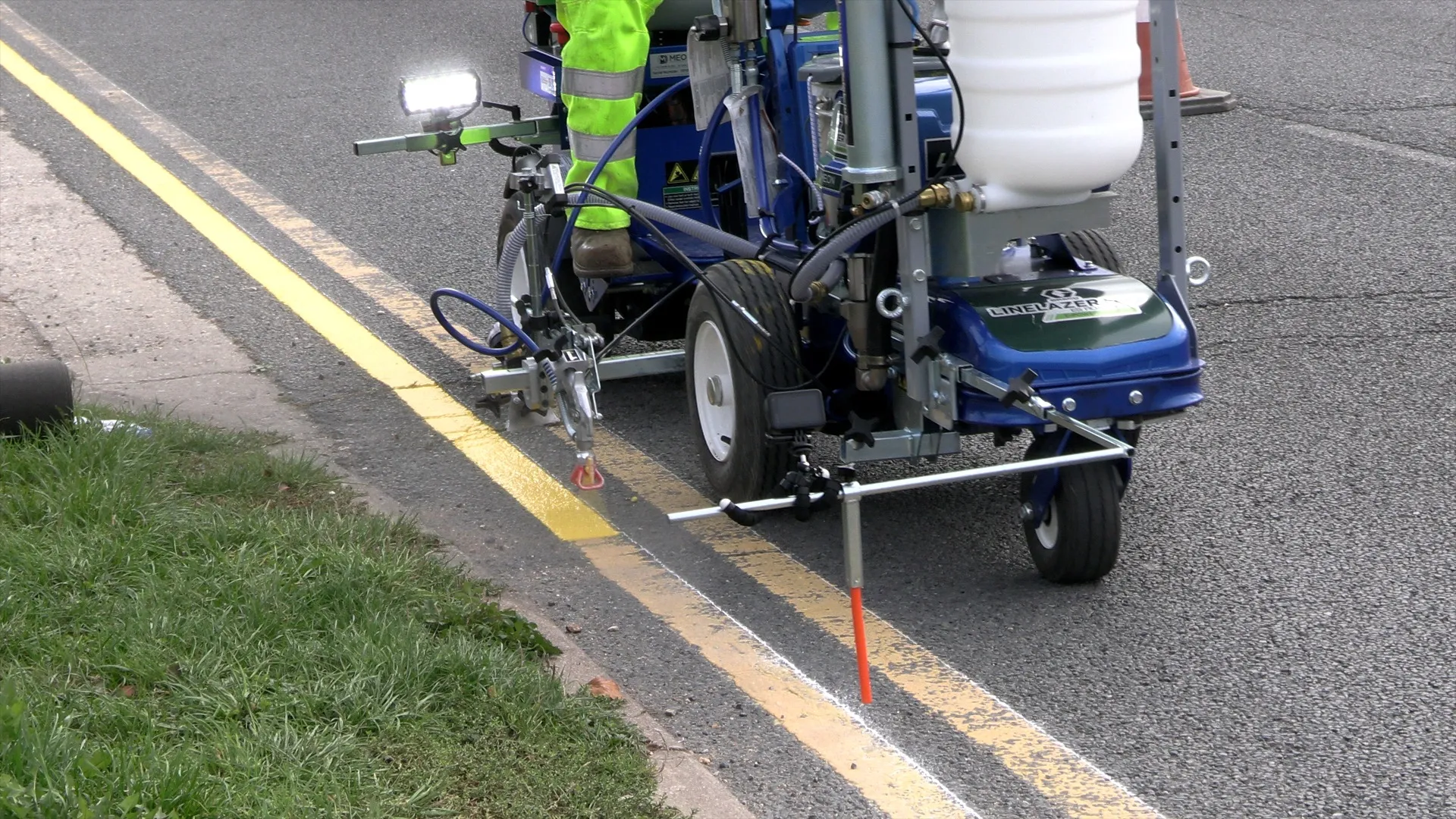Retroreflectivity plays a vital role when it comes to helping drivers follow road markings clearly in the dark as Patrick Smith reports. In many instances road markings are as important as road signs, offering information about the roads being travelled and the actions drivers should or should not be taking. Toady there is a wide variety of materials available for such markings and these include paints, cold applied plastics, thermoplastic, self-adhesive tapes, modified epoxy resins and raised pavement mark
February 13, 2012
Read time: 6 mins

Retroreflectivity plays a vital role when it comes to helping drivers follow road markings clearly in the dark as Patrick Smith reports
In many instances road markings are as important as road signs, offering information about the roads being travelled and the actions drivers should or should not be taking.Toady there is a wide variety of materials available for such markings and these include paints, cold applied plastics, thermoplastic, self-adhesive tapes, modified epoxy resins and raised pavement markers often using special glass beads (retroreflective beads) to improve night-time visibility.
Retroreflective road markings bounce light from a vehicle's headlights back towards the vehicle and the driver's eyes, meaning that signs and markings appear brighter and easier to see and read.
Retroreflectivity also provides critical information to drivers; helps drivers navigate the road during night-time hours; enhances traffic flow and driver mobility, and promotes safe driving.
Solar-powered road studs are also now widely available for use on highways, particularly in high-risk accident areas, and studs that can gather various types of data are also on the increase.
Traffic engineers have to decide which is the right marking or combination for each application. The testing of markings both before and during use is important to find how they are performing.
For example, the
Swarco says its SOLIDPLUS beads are the ideal product to highlight road markings for road construction zones, unlit tunnels, areas with frequent fog situations, zebra crossings and many more applications.
"The excellent retroreflectivity (comparable to that of high index beads) and the good resistance to traffic impact, known from our low index beads, make SOLIDPLUS a good choice where driver and pedestrian safety is a particular issue," says Hans Jesacher, sales manager with Austrian company Swarco M. Swarovski.
The class A beads, which comply with EN 1423 also perform particularly well in coloured road marking materials, for example orange or yellow stripings for special purposes, says the company.
"When combined with Swarco's liquid high quality marking materials, the titanium-stabilised beads will extend the durability of reflective road markings far beyond the usual performance life." Prismo Road Markings says that many accidents in the UK can and should be prevented, and here regional data illustrates some interesting trends.
In 2008, fatalities in the north-east of England decreased by 15.4%, compared with the previous year: the same set of figures for the north-east revealed a reduction in serious injuries on its roads of 12%, down from 1,680 to 1,477.
"These impressive results are due, in part, to the council's key decision to improve road safety by employing efficient and cost-effective engineering solutions," says
Realising that practical engineering solutions were needed to 'educate' and 'inform' drivers of the road conditions ahead, Prismo looked at improving the retroreflectivity of standard road markings and came up with the idea of embedding glass beads into its new and fast curing two-component methyl methacrylate (MMA) cold plastic line marking paint.
The A117 Stockton Road, the main arterial road linking Stockton-on-Tees with Sedgefield, became the first real traffic site for the product. New edge and centre lines were applied using unbeaded thermoplastic spray as a base line for the cold plastic. From initial application, it took just 20 to 25 minutes for the lines to cure. The lines where then 'read' by Prismo's mobile facility for measuring retro-reflectivity of laid road markings.
Prismo says the results were beyond even what it had expected."We knew that the performance of MMA in terms of retroreflectivity was exceptional. We didn't quite expect such a dramatic improvement. We had benchmarked our expected results at between the 250/300 millicandella, but the real results clearly showed an average of 500 millicandellas, with some peak measurements hitting just under 600 millicandellas," says Rosie Shanks, Prismo Road Markings commercial director commented.
Donald Walker of DCC explained: "The increased service performance of these products offers County Durham ratepayers and the council better value for money. Likewise, their improved durability means fewer visits by highway staff to apply or renew markings. Based on the results of product performance testing, it is expected that the collision numbers on the A177 will show a marked reduction".
Meanwhile,
"Safetrack LM is a thermoset product and consequently is more resistant to wear from heating and trafficking. This is particularly important for areas of the road network, which are subjected to high levels of trafficking, such as roundabouts, junction approaches and markings across the carriageways," says Stirling Lloyd.
"Safetrack LM is cold applied and the systems also provide a strong bond to what to date have been acknowledged as difficult substrates such as granite and concrete, while the improved retention of retroreflective beads results in brighter, longer lasting lines in both the dry and wet giving safer roads and a reduction in accidents." Danish company
The company's ViziSpot is a drop-shaped structured marking that makes it possible for the water to run away from the line, making the line visible. The beads are said to give a high and visible retroreflection.
At Vuurvlinder school in Eindhoven, Holland, a multi-functional playground with parking places has been created using DecoMark.
"The colorful and creative playground with parking spaces helps the practical problem of parking. From 8-9 in the morning, 12 noon-1pm and 2.30-4 in the afternoon, the parents are allowed to park in the parking places when bringing and picking up their children. During the school hours in between, no parking is allowed, and the children can play undisturbed at the 80m long caterpillar," says the company.
"DecoMark is an easy option when school or municipal playgrounds need refreshing with a colourful surface with a potential educational purpose. The decorative games encourage the children to be active while having fun. The long caterpillar at Vuurvlinder in Holland is a combination of educational areas with letters and numbers and games." DecoMark is available in a variety of standard colours.
"Although DecoMark is a thin material preformed thermoplastic material, it is still a durable solution when decorating the surface.""It gives an excellent performance in all weather conditions and an excellent behaviour for all chemistries, and is convenient for any application conditions," says Sovitec.
"Echostar guarantees a continuous performance level and ensures a cost reduction and minimal loss of beads at every application."









